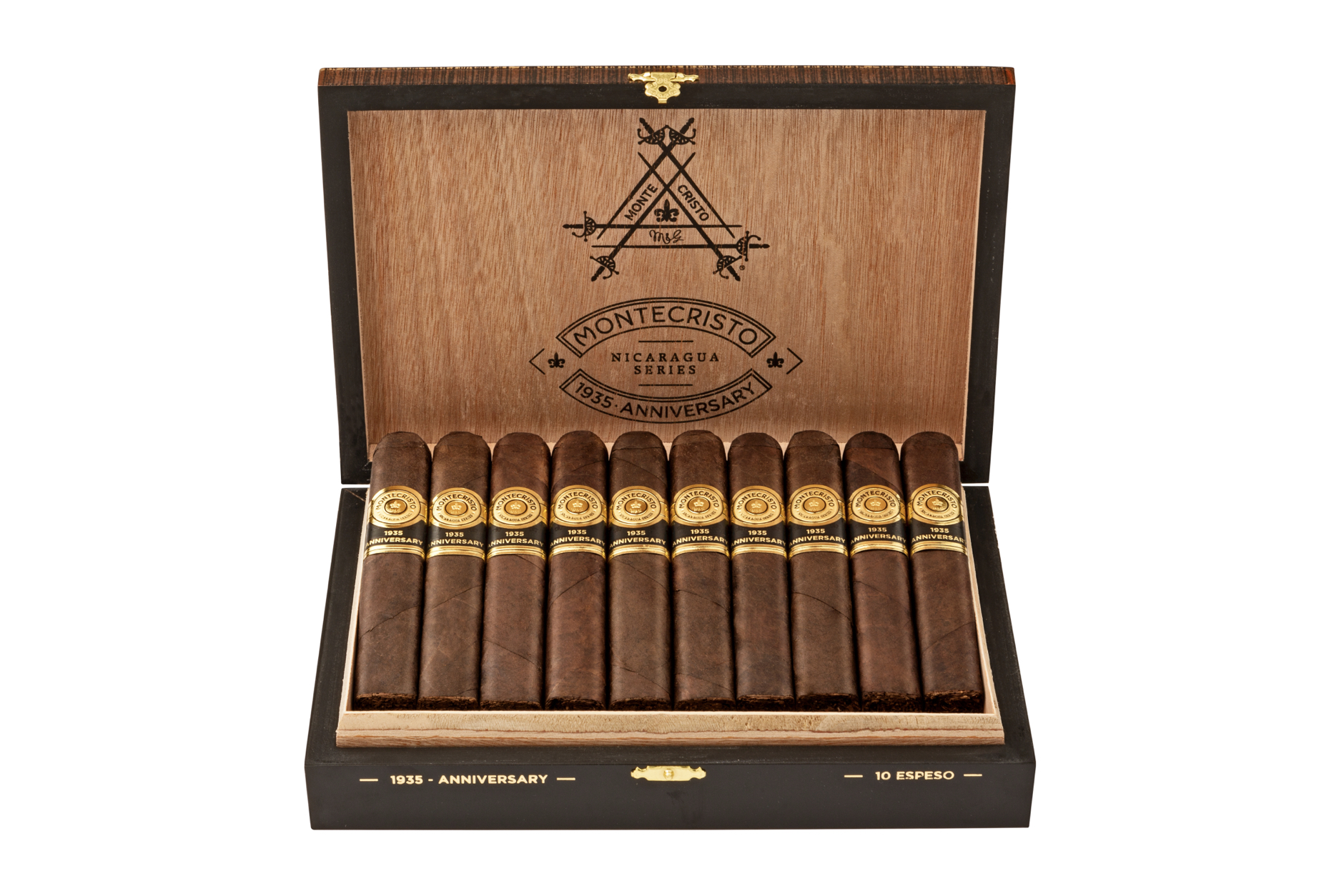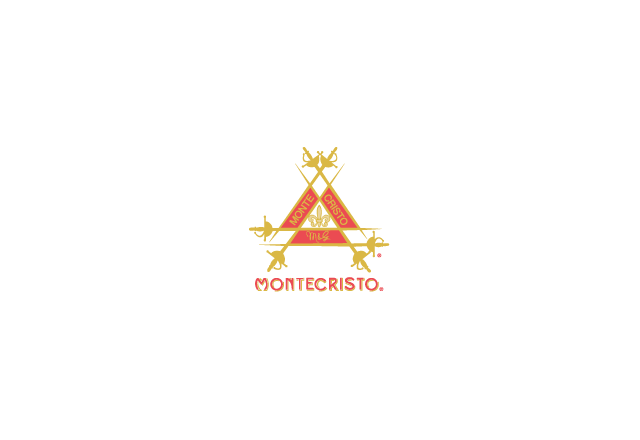When it comes to well-known cigar brands, Montecristo almost certainly has to rank near the top of the list. There are versions of the brand: Habanos S.A., the Cuban cigar company, distributes the one made in Cuba, and Altadis U.S.A., which sells non-Cuban Montecristo cigars in the U.S. Despite the differences, the two companies are actually sister companies as part of Habanos S.A. is owned by the same group that owns Altadis U.S.A.
With such a well-known brand, it would seemingly be a challenge to remain true to its roots while also satisfying the seeming demand for new cigars. For Altadis U.S.A., its newest Montecristo release, the Montecristo M, draws on something that is fairly old.
The Montecristo M’s blend is built around an Ecuadorian Connecticut-seed leaf grown by A.S.P. Enterprises, which Altadis U.S.A. says is 20-years-old. Underneath the wrapper are binder and filler tobaccos from Nicaragua, with no details provided about their specific origin or varietal.
Note: The following shows the various Montecristo M vitolas. Some of these cigars may have been released after this post was originally published. The list was last updated on Feb. 1, 2025.
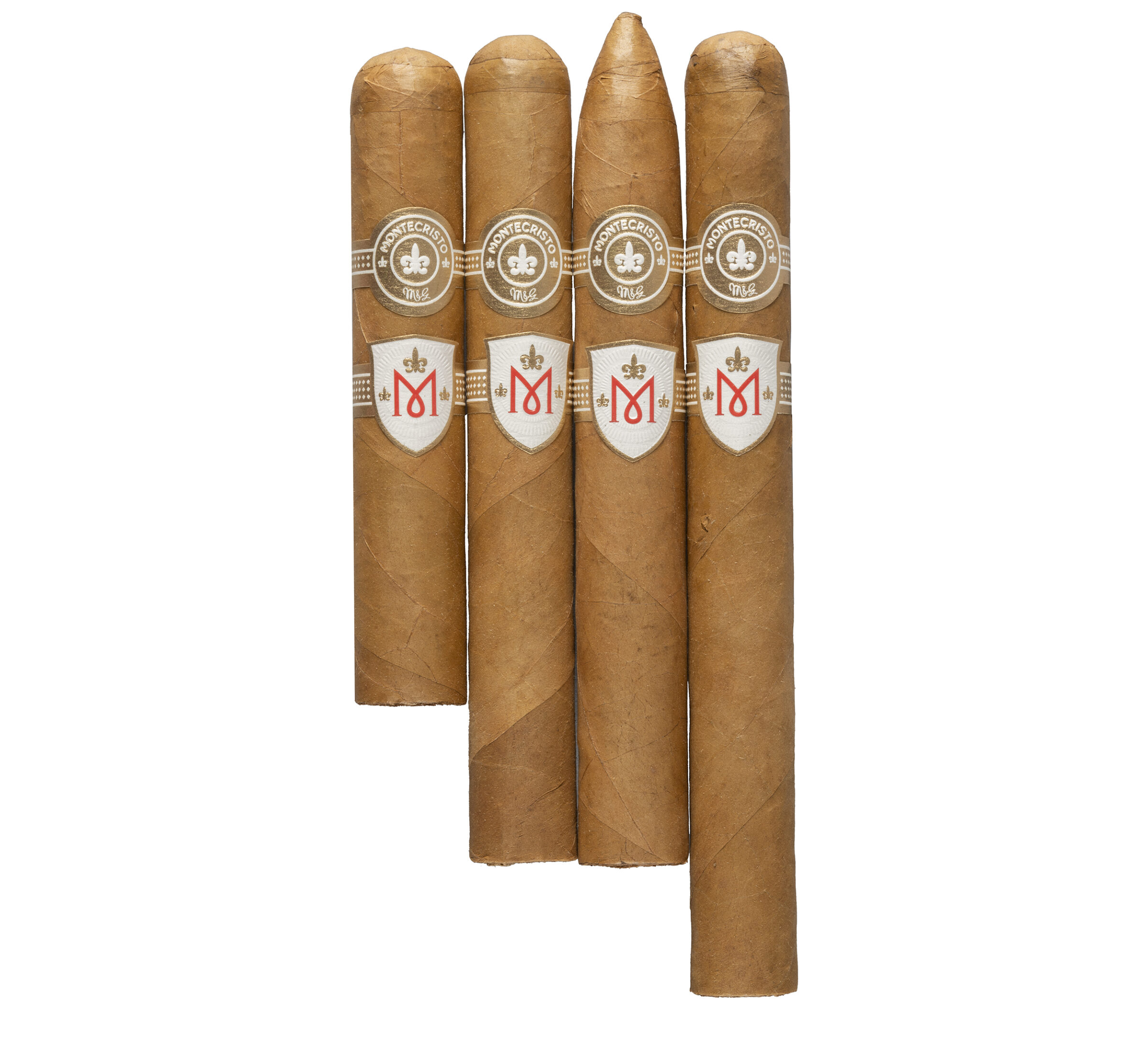
- Montecristo M Robusto (4 3/4 x 54) — $30 (Box of 20, $600)
- Montecristo M Toro (6 x 52) — $32 (Box of 20, $640, Pack of 5, $160)
- Montecristo M No. 2 (6 1/4 x 52) — $33.50 (Box of 20, $670)
- Montecristo M Churchill (7 x 50 — $35 (Box of 20, $700)
84
Overall Score
Every once in a while, I will smoke a cigar that leaves me wondering if I really got what the blender intended, as the flavor feels just a bit off, especially with how the cigar is billed and what the blend notes would seem to offer. Given the age and varietal of the Montecristo M No. 2's wrapper, I was expecting more complexity and nuance. Rather, this comes across a bit simplistic and linear, and while a lot can be made of a blend that doesn't offer a range of notes, this never felt like it found its harmony. The second half then sees chalk and minerality come along, as well as a spot of tar in one cigar, that really makes it tough for the blend to regain its footing. I can't make an excuse for a cigar, but I can wonder if I simply smoked this cigar at a less-than-optimal point in its evolution, as I have a hard time thinking that what I got was what the people that blended the cigar intended.
The line went on sale in mid-November at select Casa de Montecristo locations and the Casa de Montecristo online store, while the cigars shipped to other retailers on Dec. 10.
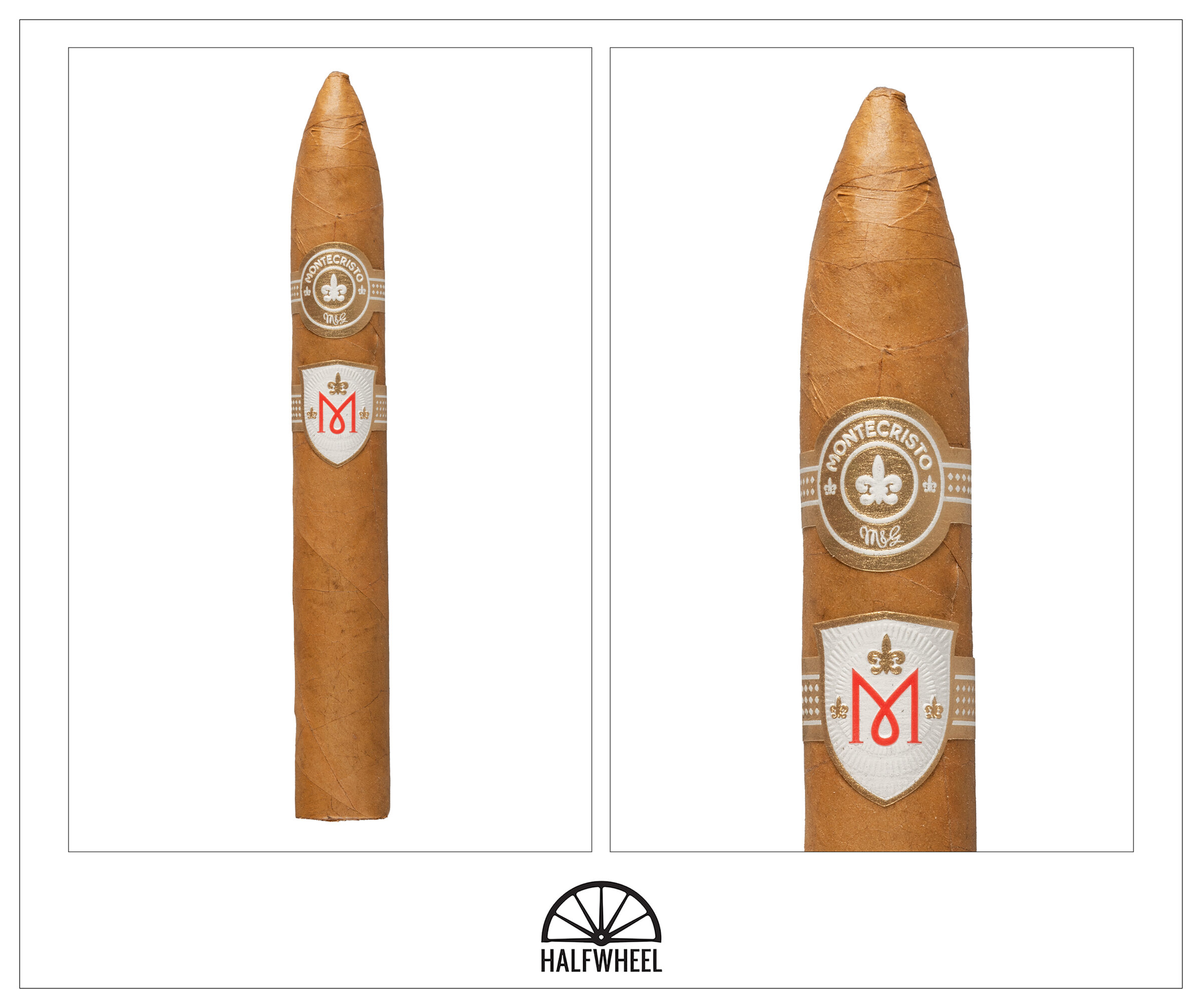
- Cigar Reviewed: Montecristo M No. 2
- Country of Origin: Nicaragua
- Factory: Tabacalera AJ Fernandez Cigars de Nicaragua S.A.
- Wrapper: Ecuador (Connecticut-seed)
- Binder: Nicaragua
- Filler: Nicaragua
- Length: 6 1/4 Inches
- Ring Gauge: 52
- Shape: Round
- MSRP: $33.50 (Box of 20, $670)
- Release Date: Nov. 20, 2024
- Number of Cigars Released: Regular Production
- Number of Cigars Smoked For Review: 3
I can’t say that there is anything about the visual appearance of the Montecristo M No. 2 that would make me think the wrapper has two decades of age on it. The wrapper is generally smooth though it’s not particularly oily, which doesn’t really surprise me given the age and varietal. The golden brown color works well with the gold, white and red on the bands. All three cigars feel a bit lighter than average in the hand, leading me to think the filler might draw on thinner, lighter leaves. It doesn’t feel underfilled, even though there’s just a little give to be found along the cylinder. Visually, the cigars look good; while some veins can be prominent, the seams are generally quite flat, and many portions are nearly invisible, while the heads of the three cigars all appear to be well-constructed. The aroma of the foot has me thinking of white or sourdough bread with varying amounts of butter as its medium-intensity sensation and body settle in my nostrils. There’s a touch of pepper, but it is sparing. Even with a conservative amount of the head clipped off, airflow is very good on the cold draw. The flavor is even mellower than the aroma, with a little bit of creaminess taking hold of my taste buds after a couple of puffs.
The first puffs of the Montecristo M No. 2 are dry with the white bread note from the aroma the first thing I notice. However, there are now two distinct sensations: flavors that remind me of the softer inner part and the firmer outer crust. It’s a bit thin in body, but also surprisingly peppery. My first retrohale has even more black pepper, supported by a minor amount of creaminess and some dry crackers. The most enjoyable expression of the flavor seems to be correlated to taking a little bit more of the head off and thus opening up the draw a touch more. The narrower the cut, the drier and more simplistic the flavor, while opening the head up allows some creaminess to join the profile. While it’s still early into the experience, I’m struck by how light the profile is, not something I often get to write about cigars with a Nicaraguan binder and filler. The final puffs of this section pivot just a touch with a bit of a light mineral sensation. Flavor is medium-minus, body is medium-minus and strength is mild. Construction is very good, with the only note being about the draw and how taking a bit more off the top can make a very positive difference.
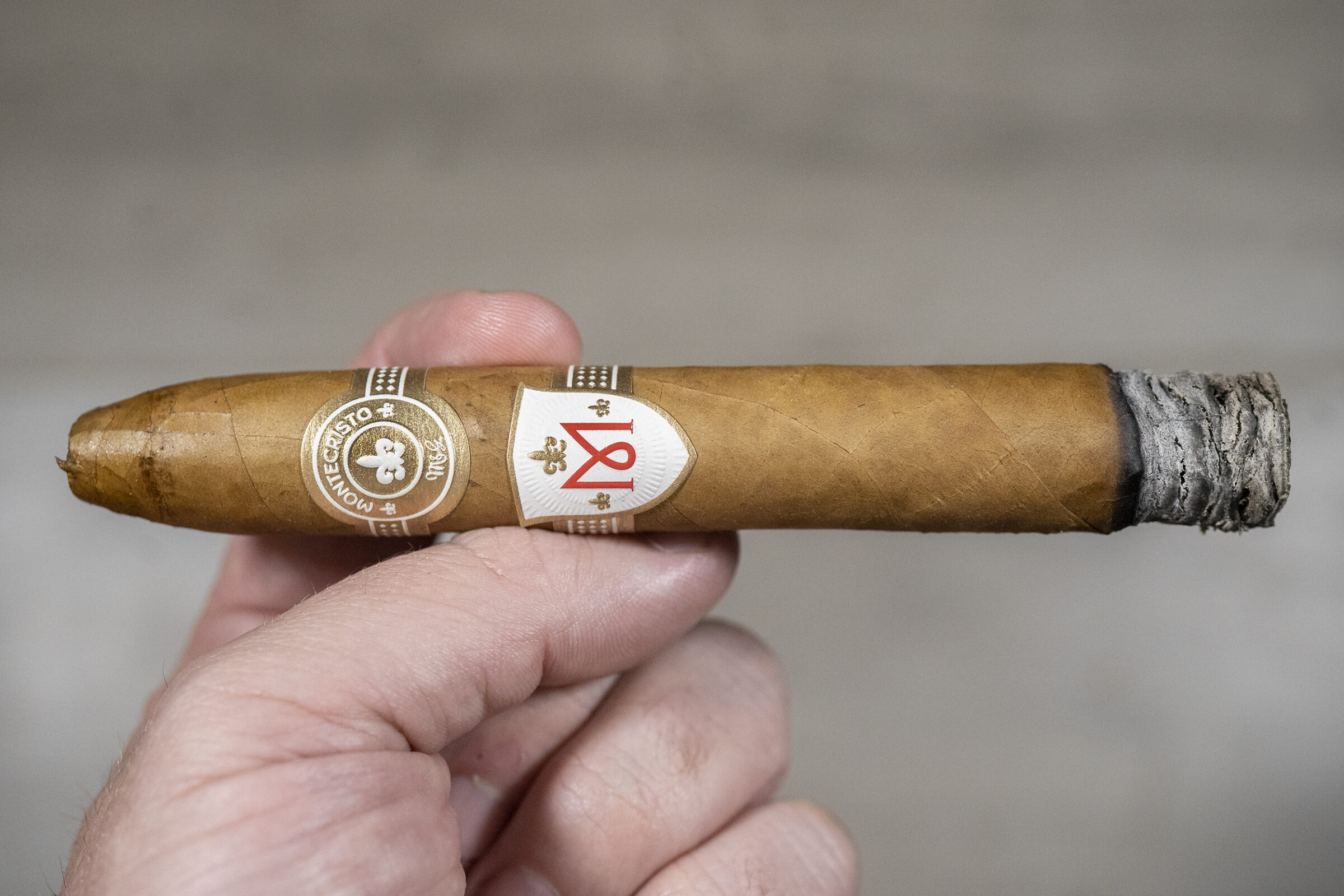
The second third of the Montecristo M No. 2 dials up the intensity of the flavor a tick by way of a bit more minerality, some very light earth, and the flavor of the dry crust of a dinner roll. The flavor is fine, but to this point feels like it hasn’t earned the kind of adjectives I would expect to be using for a cigar highlighting a 20-year-old wrapper and with a premium price tag, namely that it’s lush, refined, or complex, while balanced and harmonious both feel like a stretch. It’s not necessarily that things are out of balance, just that the profile isn’t yet delivering what it would seem capable of doing. The midpoint of the third cigar introduces a bit of chalk that dovetails in with the minerality; for some reason, the combination works for me even though I’m not inherently a fan of either component. Out of that, I get a bit more creaminess, which helps to change the narrative of the profile to a more positive and palate-friendly expression. Flavor is approaching a solid medium, while the body of the smoke has reached that mark and strength stays mild. Construction is still very good, though there are some spots where it feels like the draw tightens up just a touch and the combustion becomes a bit more labored, though neither rise to the point of a deduction.
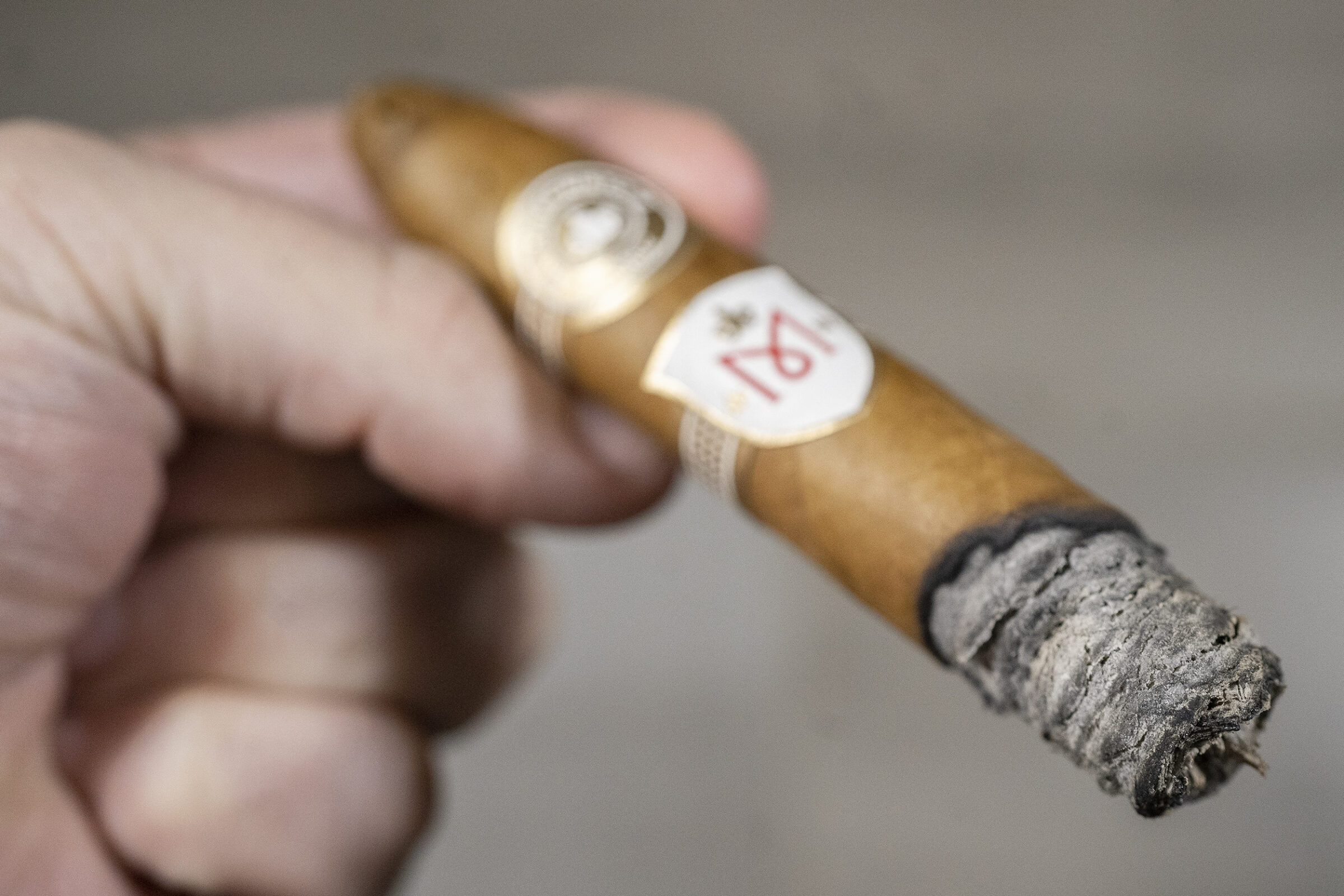
In the first two cigars, the final third sees the flavor profile improve quite noticeably as the intensity ticks up a few notches, the body of the smoke fills out a bit, and there’s some layering and depth that I wasn’t getting earlier. Retrohales are still peppery but with just a slight dialing back of the intensity, now match up quite well with the intensity of the flavor. In the case of the third cigar, this section starts off with a sharp veer back towards chalk and minerality, a change that shows up a bit later in the other two cigars, closer to when there are about two inches left. As noted before, these are two flavors that I rarely find appealing and one that can quickly change my opinion of a cigar. In this case, the third cigar really derails the flavor for me, while the other two struggle to keep from going off the rails. In the third cigar, the flavor increases to the point where I have to check the end of the cigar for tar, and sure enough, I find enough to put a small black spot on my finger, which forces me to take more of the head off in hopes of salvaging the rest of the cigar. All three cigars with an increasingly dry profile, turning the bread note to toast, with a bit of heat sharpening up the profile. Flavor is medium with some puffs touching medium-plus, while the body is still medium and strength is mild. Construction is very good, most notably the burn line that has been impressively even across all three cigars. The draw, smoke production and combustion are also quite good, but none stand out as being exceptional, and in some cases, the combustion does seem to slow down enough to warrant a touch-up.
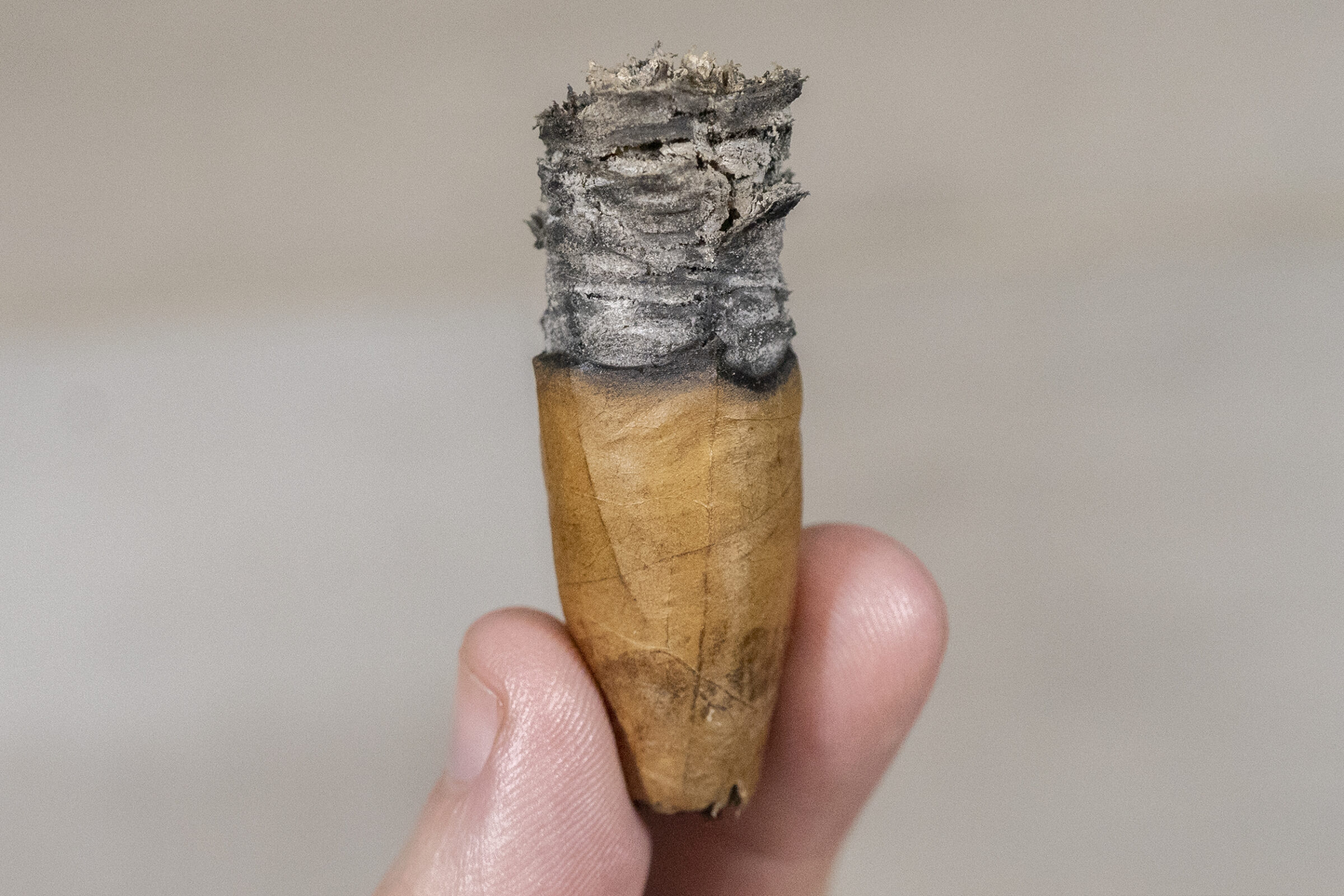
Final Notes:
- I had the opportunity to visit A.S.P. Enterprises’s Nicaraguan operations during the 2025 Puro Sabor Festival. The company’s farms in Nicaragua only produce filler, while the Ecuadorian operations are focused on wrapper and binder.
- The first cigar’s smoke generated an unbelievable amount of eye irritation, particularly in the second half, when it felt like my eyes were constantly itching. The second and third cigars were only mildly better but far from being irritation-free.
- The secondary bands all took a bit of the wrapper from all three cigars when they were removed. It didn’t cause any detrimental effect on the cigar, but it is still unpleasant to see part of the leaf ripped off.
- I’m not exactly sure what caused this or what I could have done to prevent it. I tried to let the burn line get as close to the band as possible so as to warm up and loosen the adhesive, but that was no help in avoiding some damage to what I have to assume is a fragile wrapper.
- The cigars for this review were purchased by halfwheel.

- The company lists these as a 6 1/4 x 52 belicoso. The numbers above are the measurements we found for the three cigars used for this review. There aren’t many cigars we’ve measured that are a similar length and ring gauge as these three, but the weights for those cigars are quite similar.
- Final smoking time was two hours and 20 minutes on average.
- Site sponsors Atlantic Cigar Co., Cigars Direct, Corona Cigar Co., Famous Smoke Shop and JR Cigars, carry the Montecristo M No. 2. While Cigar Hustler doesn’t carry the No. 2 vitola, it does have the similarly-sized Toro vitola.
84
Overall Score
Every once in a while, I will smoke a cigar that leaves me wondering if I really got what the blender intended, as the flavor feels just a bit off, especially with how the cigar is billed and what the blend notes would seem to offer. Given the age and varietal of the Montecristo M No. 2's wrapper, I was expecting more complexity and nuance. Rather, this comes across a bit simplistic and linear, and while a lot can be made of a blend that doesn't offer a range of notes, this never felt like it found its harmony. The second half then sees chalk and minerality come along, as well as a spot of tar in one cigar, that really makes it tough for the blend to regain its footing. I can't make an excuse for a cigar, but I can wonder if I simply smoked this cigar at a less-than-optimal point in its evolution, as I have a hard time thinking that what I got was what the people that blended the cigar intended.
I strive to capture the essence of a cigar and the people behind them in my work – every cigar you light up is the culmination of the work of countless people and often represents generations of struggle and stories. For me, it’s about so much more than the cigar – it’s about the story behind it, the experience of enjoying the work of artisans and the way that a good cigar can bring people together. In addition to my work with halfwheel, I’m the public address announcer for the Colorado Rockies and Arizona Diamondbacks during spring training, as well as for the Salt River Rafters of the Arizona Fall League, the WNBA's Phoenix Mercury, the G-League's Valley Suns, and previously the Arizona Rattlers of the Indoor Football League. I also work in a number of roles for Major League Baseball, plus I'm a voice over artist. Prior to joining halfwheel, I covered the Phoenix and national cigar scene for Examiner.com, and was an editor for Cigar Snob magazine.







